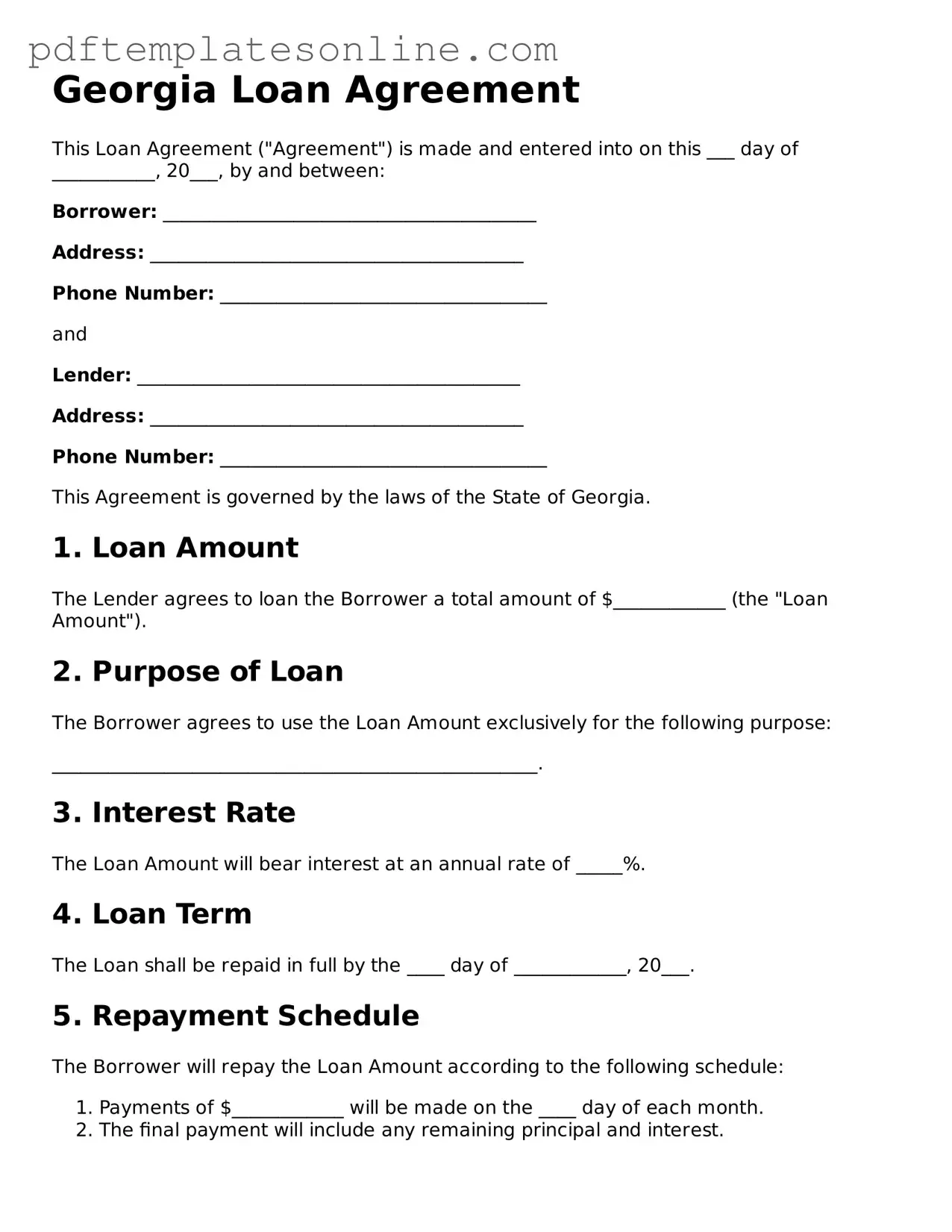Filling out the Georgia Loan Agreement form can be straightforward, but many individuals make common mistakes that can lead to complications. One frequent error is failing to provide accurate personal information. This includes names, addresses, and contact details. Even a small typo can create significant issues down the line, such as delays in processing or problems with communication.
Another mistake often made is neglecting to read the terms and conditions thoroughly. Borrowers may sign the agreement without fully understanding their obligations and rights. This oversight can result in unexpected fees or unfavorable loan terms. It's crucial to take the time to understand what you are agreeing to before signing.
Inadequate documentation is also a common issue. Many people forget to attach necessary documents, such as proof of income or identification. Without these documents, the loan application may be incomplete, leading to rejection or prolonged processing times.
Additionally, individuals sometimes miscalculate the loan amount they need. Borrowers may either underestimate or overestimate their requirements. This mistake can affect repayment plans and financial stability. It's advisable to carefully assess your financial needs before specifying the loan amount.
Another frequent error is not disclosing all existing debts. Borrowers might think that omitting certain debts will improve their chances of approval. However, lenders typically conduct thorough background checks. Failing to disclose all financial obligations can lead to trust issues and potential denial of the loan.
People also often forget to date the form correctly. An incorrect or missing date can lead to confusion about when the agreement was made. This detail is essential for establishing the timeline of the loan and ensuring that both parties are on the same page.
Lastly, many individuals overlook the importance of reviewing the completed form before submission. Rushing through the process can lead to errors that might have been easily caught with a final review. Taking a moment to double-check the information can save time and prevent headaches later on.
